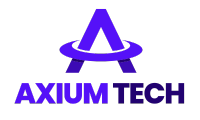Today’s fast-growing digital landscape requires enterprises to use high-performing data centers that handle rising network requirements. However, at the heart of these data centers lies a critical component: the data center switch.
The selection of appropriate switches remains vital for achieving smooth interactions together with adaptable capabilities and efficient processes during business growth.
Current changes in technology, particularly cloud computing and artificial intelligence, have resulted in extensive demand for secure, scalable, and reliable networking solutions.
Therefore, the knowledge of these specific aspects helps organizations make purposeful choices that support their development and optimize operation efficiency as they address evolving network requirements.
This article evaluates the essential elements enterprises need to determine when choosing data center switches based on their performance qualities and technology sustainability needs.
Understanding Data Center Switches
The data center switch functions as a critical networking component that combines servers, routers, and storage systems into a unified network structure that supports data center operations. The rapid data switching capability of these devices enables high-speed handling of significant volume traffic while maintaining business application performance.
Data center switches typically fall into two categories:
- Core Switches: Core switches direct data traffic flow between different data center levels with external network connections.
- Top-of-Rack (ToR) or Leaf Switches: These network devices are positioned atop server racks to link all servers that reside within this rack structure.
Organizations should choose network switches to fulfill present requirements while foreseeing upcoming organizational expansion needs.
Key Factors in Choosing the Right Data Center Switch
There are certain key factors you should keep in mind while choosing the right data center switches for your organization; some of them are listed below.
1. Scalability
Business growth leads to dramatic increases in network requirements. Scalability stands as the key factor to evaluate when buying a switch. Choose data center switches that maintain their operational capability while handling rising workload requirements.
Features to Consider
- Port Density: A denser port number in switches provides the ability to join new servers and devices without necessitating switch replacements.
- Modular Design: The modular design of switches enables organizations to increase ports while also adding required modules that match organizational needs.
- Stackability: Through stackable switch implementations, enterprises can establish single interconnected networks from multiple connected switches.
2. Performance and Throughput
A data center’s operational efficiency depends on how well the switch operates. Test the switch’s speed capacity combined with minimal delay performance throughout data processing activities.
Key Metrics
- Bandwidth: Select a switch that meets present and future data requirements through bandwidth capacity of 10GbE, 25GbE, and potentially 100GbE.
- Latency: Time-sensitive applications involving financial trading and real-time analytics have essential requirements for low-latency switches.
- Packet Forwarding Rate: The selected device must process large data packet volumes per second.
3. Support for Network Protocols and Standards
A switch needs to support multiple protocols together with diverse standards so users can maximize interoperability and flexibility.

Examples of Key Protocols
- Spanning Tree Protocol (STP): Prevents network loops
- Link Aggregation Control Protocol (LACP): Multiple connectivity links merge together through a logical approach to increase bandwidth performance.
- VXLAN: Supports virtualized network environments
- OpenFlow: Facilitates SDN (software-defined networking)
4. Automation and Management
Today’s data centers depend on automation systems to minimize manual operations and maximize both operational efficiency and data precision. You should choose switches that offer complete management automation capabilities.
Automation Capabilities to Seek
- Support for SDN: Users gain complete control and management capabilities over their network through centralized functionality.
- APIs and Scripts: Facilitates custom automation workflows
- Zero-Touch Provisioning (ZTP): Simplifies initial configuration and deployment
5. Reliability and Redundancy
The operation of data centers needs to run consistently without shutdowns. The network switch must exhibit high-reliability standards to include redundancy capabilities in its design. Many organizations achieve this level of reliability by working with a cloud service provider in Philadelphia, allowing them to focus on their core operations while essential systems and uptime requirements are professionally managed. These providers are equipped to deliver enterprise-grade environments with built-in failover, proactive monitoring, and support that aligns with business continuity goals.
Key Features
- Redundant Power Supplies and Fans: The switch operates without disruption because of hardware failure mechanisms.
- Hot-Swappable Components: You can replace switch parts without requiring power shutdown during maintenance operations.
- Failover Mechanisms: Network continuity remains operational through automatic traffic rerouting after failures occur.
Switch Architectures: Leaf-Spine vs. Traditional
Enterprises must also decide on the overall architecture of their data center network:
1. Traditional Hierarchical Architecture
- Contains core, aggregation, and access layers
- It is less scalable but more straightforward to implement.
- Suitable for small to medium-sized enterprises
2. Leaf-Spine Architecture
- Servers are connected to leaf switches using leaf switches, and spine switches connect leaf switches.
- Offers greater scalability and reduced latency
- Ideal for large-scale enterprises and those adopting SDN
Future Trends in Data Center Switching
To stay ahead, enterprises must consider emerging trends in data center switching:
- 400G Ethernet: The need for faster connections has been forcing the adoption of 400G switches.
- AI-Powered Management: Traffic management is going to be optimized using AI and machine learning, and fault results will be detected.
- Disaggregated Networking: Hardware and software separation allows for better flexibility and cost savings.
- Edge Computing Integration: For low latency applications, switches will increasingly support edge data centers.
Bottomline
A key component of creating an effective and scalable business network is selecting the appropriate data center switch.

Businesses can improve operations and future-proof their infrastructure by taking into account elements like automation, scalability, and performance.
Purchasing the appropriate switch guarantees smooth connection, fosters expansion, and satisfies the requirements of contemporary technologies.
So, are you ready to take your data center to the next level?
Consult with networking professionals immediately to get the ideal solution for your company’s needs!



